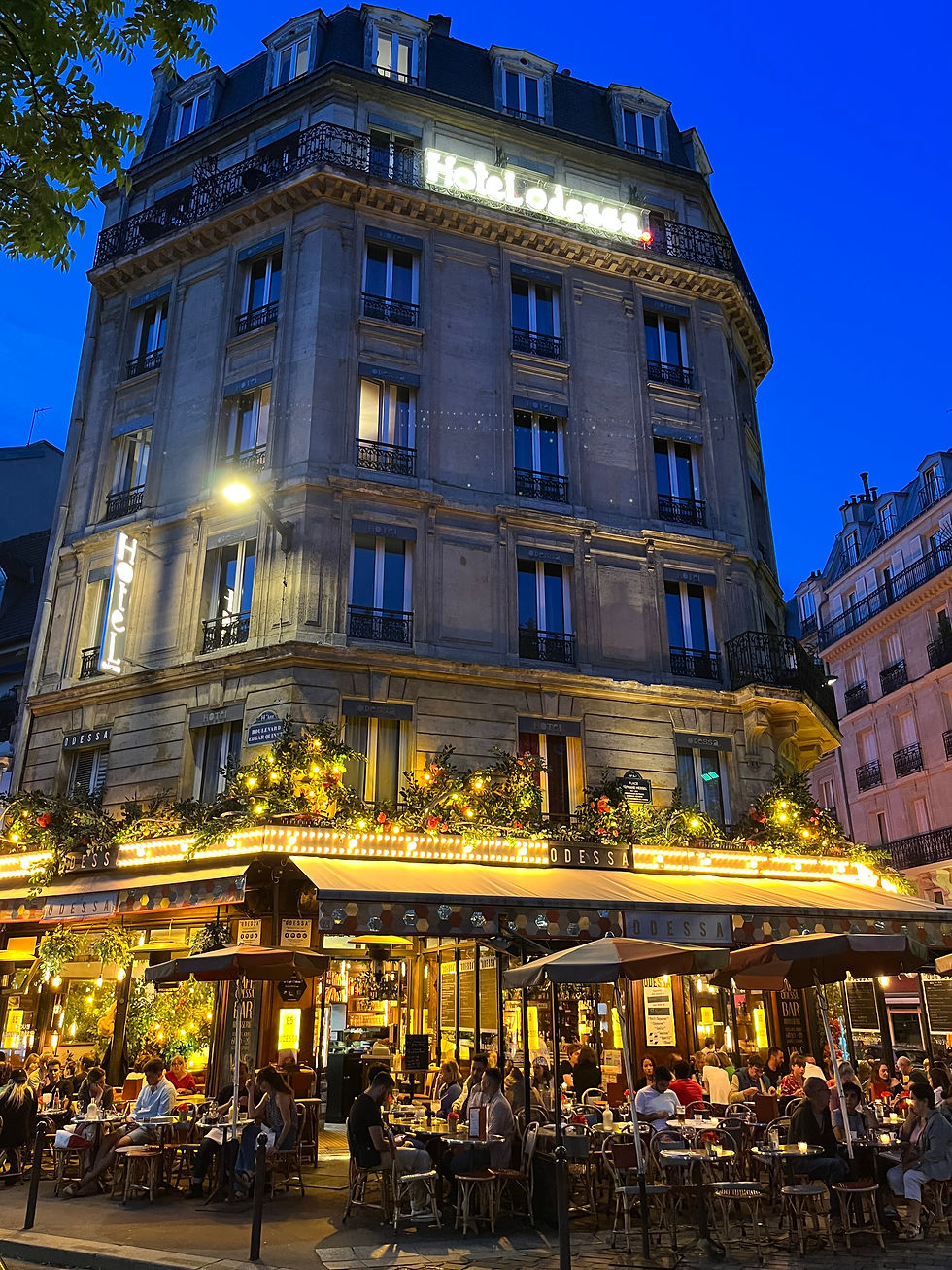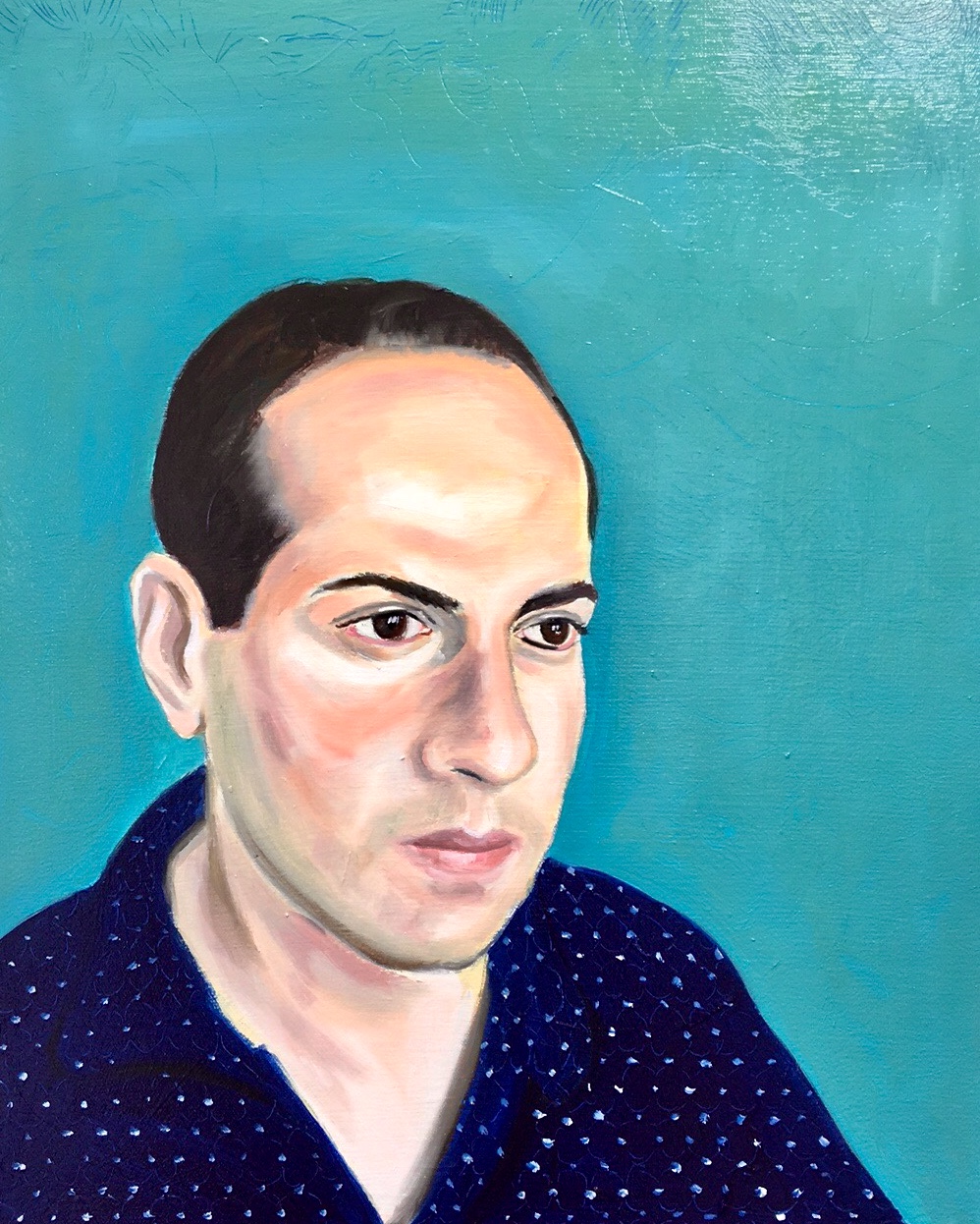In Search of Foujita: An Artist's Pilgrimage (Part 1)
- Edward Luper
- Aug 24, 2022
- 5 min read

People go to Paris to see the Eiffel tower, the Louvre, Notre Dame cathedral etc...but I went this time with a very different purpose in mind. I went with the specific aim of searching for Foujita; a sort of artistic pilgrimage to les années folles (the mad years). I hoped to find some hidden gems and maybe get an insight into the work of an artist I greatly admire for his cats, nudes, and combined influences of Japanese and Western art. It was a rewarding journey, and I had to divide my Foujita pilgrimage into several blogs; I hope my dear reader, if they have patience enough to come along with me, will also find it of interest.
Some Historical Background...
For those who maybe don't know about Foujita, I think its important to first just give a bit of background. Léonard Tsuguharu Foujita, arrived in Paris in 1913, and was one of the emblematic figures of the Parisian avant-garde of Montparnasse. A graduate of the School of Fine Arts in Tokyo, where he specialized in Western art, he quickly found great success among Parisian collectors for his cats and nudes, combining Eastern and Western styles. His fame today however, somewhat languishes compared with his friends Modigliani, Soutine and Picasso, although he is seeing a revival now.

When reading about avant-garde artists of Montparnasse, Foujita tends to lurk in the shadows. For example, Hemingway's love-letter to Paris A Moveable Feast is a time capsule that provides one with a cornucopia of places and people: Ezra Pound, Gertrude Stein, Scott Fitzgerald etc. But Foujita is not mentioned (although I wonder if Hemingway's meeting with Ezra Pounds' Japanese aristocratic friends with long hair a reference?). Hemingway must have been aware of Foujita though; he did after all write the preface to Kiki's Memoirs illustrated in part by Foujita.

In Man Ray's autobiography, Foujita is mentioned once in passing - at a party where Man Ray and Kiki of Montparnasse were invited. John Glassco's Memoirs of Montparnasse also mentions Foujita only briefly at a party somewhat rudely:
By the mantelpiece Foujita, with his sad monkey-face, was holding court with his usual entourage of beautiful women.
Foujita seems to have glided with ease amongst the wild Parisian parties, despite the fact that he did not drink alcohol. And unlike many of his Japanese compatriots who struggled with the culture shock, Foujita seemed to have fit right in with his antics and exhibitionism and he certainly wanted to show that he could enter French avant-garde society naturally. But it was not always so easy: Foujita did not like to admit that he was once harassed by children at a market who threw stones at him calling him 'Chinaman', and at another market a group of Frenchmen chased him away. It is remarkable that he persisted with his dream of staying in Paris despite the difficulties, where many left after a year.
The Foujita Trail Begins: Montparnasse

My first stop when I arrive one night in Paris is the Hotel Odessa in Montparnasse. Just off Edgar Quinet street, this is where Foujita stayed when he first arrived in Paris in 1913. Montparnasse is the area where so many modern art movements and isms began, and it sometimes feels overwhelming knowing how many great artists and writers were all located in this small area. Walking around, one gets a sense of how close everything was to each other.


On the main Boulevard du Montparnasse are the grand cafes such as Le Dome, La Coupole, La Rotonde and Le Select: all of them a stone's throw away from each other, all of them hangouts for some of the greatest artists and writers who for the price of a coffee could warm themselves and work with good light all day, rather than be in their poorly lit and cold studios.

Just behind the Dome café, is rue Delambre. Here you will find a plaque with Foujita's name. It is just across from the Dingo, another famous American bar/bistro frequented by numerous writers and artists. Montparnasse in the 1920's still felt extremely rustic and rural. Numerous writers such as Hemingway and Glassco mention shepherds blowing their horns to tell people to come and collect milk from the goats they were herding by. And there is miraculously still one pocket left that still captures the rustic feel of Montparnasse.

Chemin du Montparnasse

Just under the Tour Montparnasse and on the right, this bucolic enclave of artists is nothing short of miraculous! Constructed with recuperated materials from the Universal Exposition of 1900, this still intact oasis of calm and greenery glimmers with the bohemian spirit of les Années Folles. All of the artistic avant-garde of the École de Paris could be found there during the 1920s.

Today the ateliers, whose crooked structures remain standing in spite of their age, are occupied by a new generation of artists. You can spot their works through the wisteria and creeper-covered front windows. Two of the largest ateliers are open to the public. To the left, you will find the Villa Vassilief, named for the Russian artist Marie Vassilieff (1884-1957), who came to study painting in Paris under Matisse before setting up her own art school here in 1921. It quickly became a hangout for artists like Braque, Juan Gris, Matisse, Modigliani, Fernand Léger, Picasso, Soutine, and Zadkine, along with literary figures and musicians including Apollinaire, Cocteau, and Satie. It strongly resembles Foujita's painting of Soutine's studio.

Foujita's Studio at 14 Cité Falguière
A bit further away from Chemin du Montparnasse is the actual locaion of Foujita's studio: No 14 at Cité Falguière. The building is totally destroyed and all the remains is a modern apartment block. However, just next door at no 11, is still an artist's studio from 1920's that captures the spirit of the place as it was.

Foujita actually first moved to no.14 Cité Falguière in 1913 and lived here during the First World War, when disruptions at the banks cut off his allowance from Japan. This forced him to use his ingenuity to acquire food and other supplies.
"We artists in Paris had already been waging war with poverty"
In one of Foujita's tales about his wartime deprivations, he described his daily pilgrimage to the local butcher to buy leftover meat bones, which he said he was going to use to feed his cat. Actually, he made hot soup for himself from those precious ingredients. When at last the butcher, annoyed by his requests, asked whether he really had a cat, Foujita was forced to confess, "The cat is really me." At times, Foujita even had to burn furniture and artworks to keep warm. Due to lack of oil paints, it was around this time he focused on watercolours. A sketch by Foujita captures his creative ways of survival by doing odd jobs such as mending clothes, or making his own etc. Foujita continued to struggle until his big break came in 1922, but that is for the next blog post.







Comments